Holidays, as I understand it, are coming. As I write this, Christmas is barrelling down on us like a festive red-and-white juggernaut, and it’s the time of year when families reach for games. If your experience of games at gatherings can be summed-up with Charades and Pictionary, you might be pleased to know that there are loads more to choose from. I’ve been playing Hues and Cues, from The Op, another game looking to help you make merry when the hordes descend on your house for a gathering.
Panettone or Pantone?
The board for Hues and Cues is simultaneously simple and gorgeous. It resembles something like a paint chart, or a colour picker if you’ve ever used something like Photoshop. I took this game to a convention recently, and it certainly turns heads. This might not sound like a big deal, but the huge swathe of colours is really good at drawing people’s attention. Another thing it has going for it is just how simple the game is to explain.
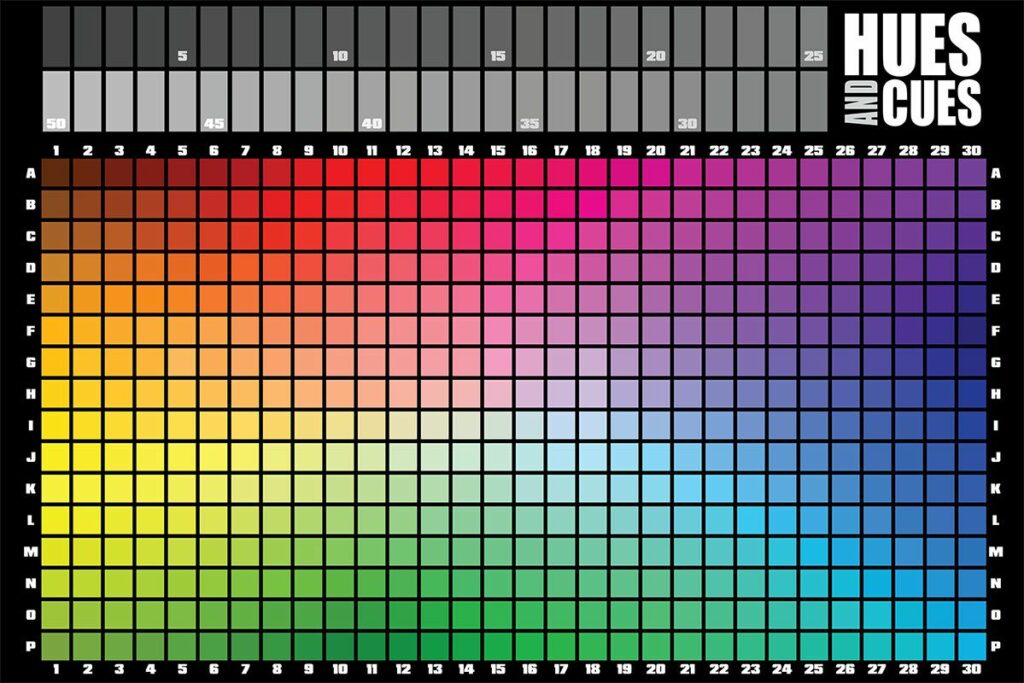
Take a card, and choose one of the four colours on it in secret. Each has a grid reference to find on the main board. Give everybody else a one-word clue to the colour, and ask them to place their first cone on the square they think matches the clue. Once everyone has had a guess, give a two-word clue and let people guess in reverse order. The closer you are to the correct colour, the more points you score.
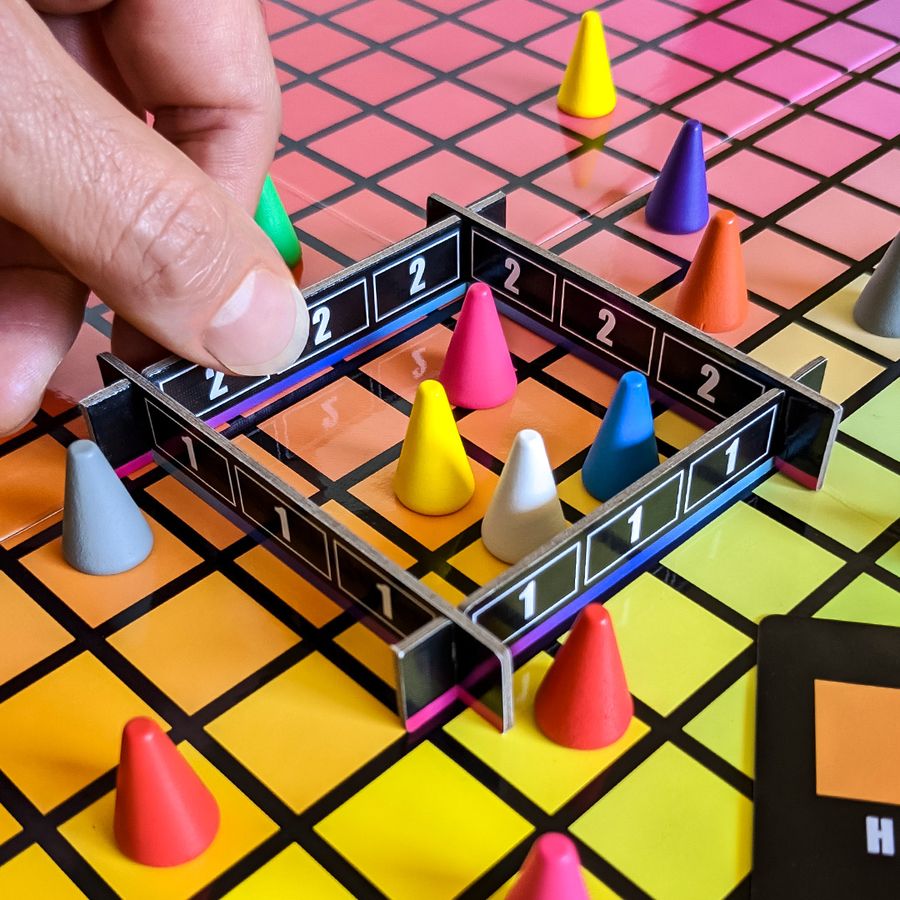
You now know how to play Hues and Cues. Seriously, that’s it, and that’s what makes it a fantastic game for a large group. It supports up to ten players, but with more than eight you might find it hard to place your guess markers down without disturbing the others already on the board. That sort of thing bugs me, but who knows, maybe your clan enjoys that kind of abject chaos. Who am I to judge? The board is really glossy too, which makes it a pain to photograph, but ideal for wiping off dropped bits of Christmas cake.
Kaleidoscope
Hues and Cues is another game like Anomia, in as much as it’s amazing at breaking your brain. You pick up a card and see a bright pink square, and laugh internally how stupidly easy this game is. But now you have to give a one-word clue to this precise shade of pink, and suddenly the only words you know are Barbie and Flamingo. You’ve seen hundreds of pink things during your life, but can you remember any of them? Not a chance. Your brain is a sieve, and your knowledge of colours is but spilled flour on the kitchen counter of ignorance.
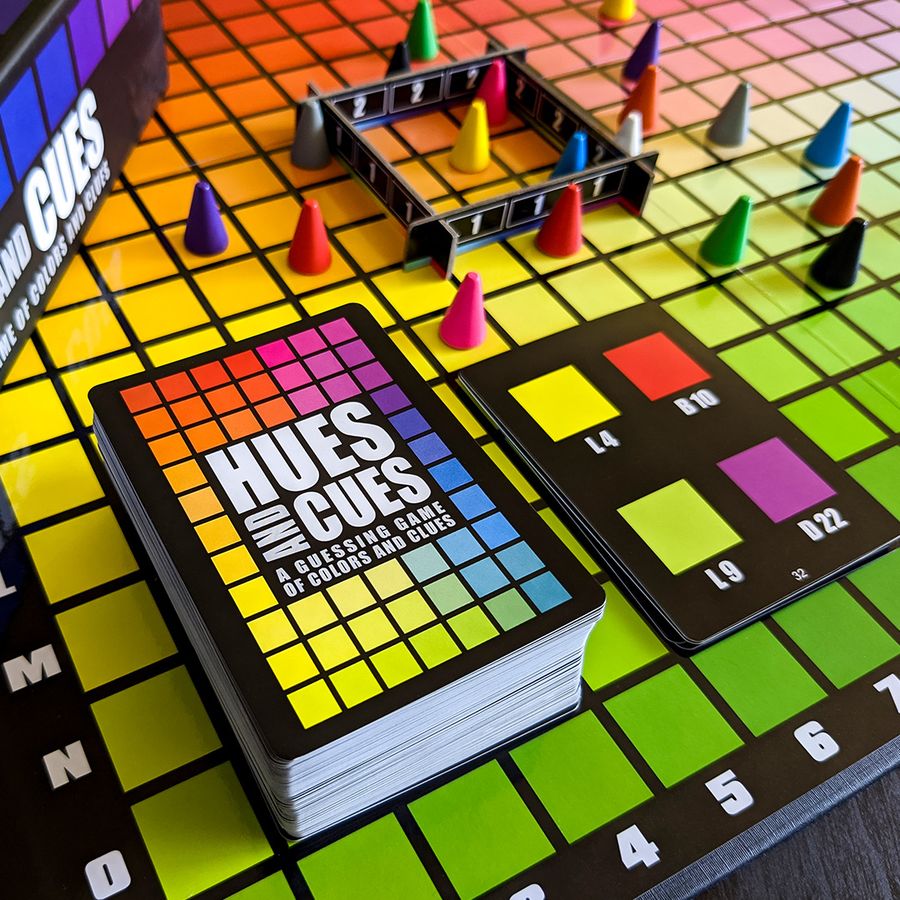
The hilarity that ensues from some peoples’ clue-giving is contagious, and enough to draw anyone to the table. You don’t really know your friends and family until you know what colour they think ‘mint’ is. I played a game with a group, and the first clue given was ‘sandy’. Five plastic cones took centre stage, occupying the beige-y colours near the middle of the board. He looked horrified, thought hard, and said ‘mossy sand’ as his second clue. Maybe it was because we’d had a couple of drinks by this point, but a couple of people were crying laughing as he tried to explain why sandy had a greenish hue in his mind.
True, there are bunches of colours on the board which are almost indistinguishable from one another, but nuance is the secret sauce that makes Hues and Cues so tasty. It’s the difference between Dairy Milk and aubergine. It’s grass versus lime versus aircraft primer.
Yes, aircraft primer was a clue I was given.
Shades of grey
This all makes Hues and Cues sound amazing, and it is, mostly. The only drawback I’ve found is it doesn’t retain the same level of novelty and excitement through repeated play with the same group. It’s still good fun, but it doesn’t feel as interesting as it did the first time. It’s definitely a consideration if you were thinking of buying it as a game for your regular group. I’ve found myself reaching for Wavelength and Codenames again. It’s also not nearly as entertaining if you’re playing with just three or four people, so save if for when you’ve got a group together around a table.
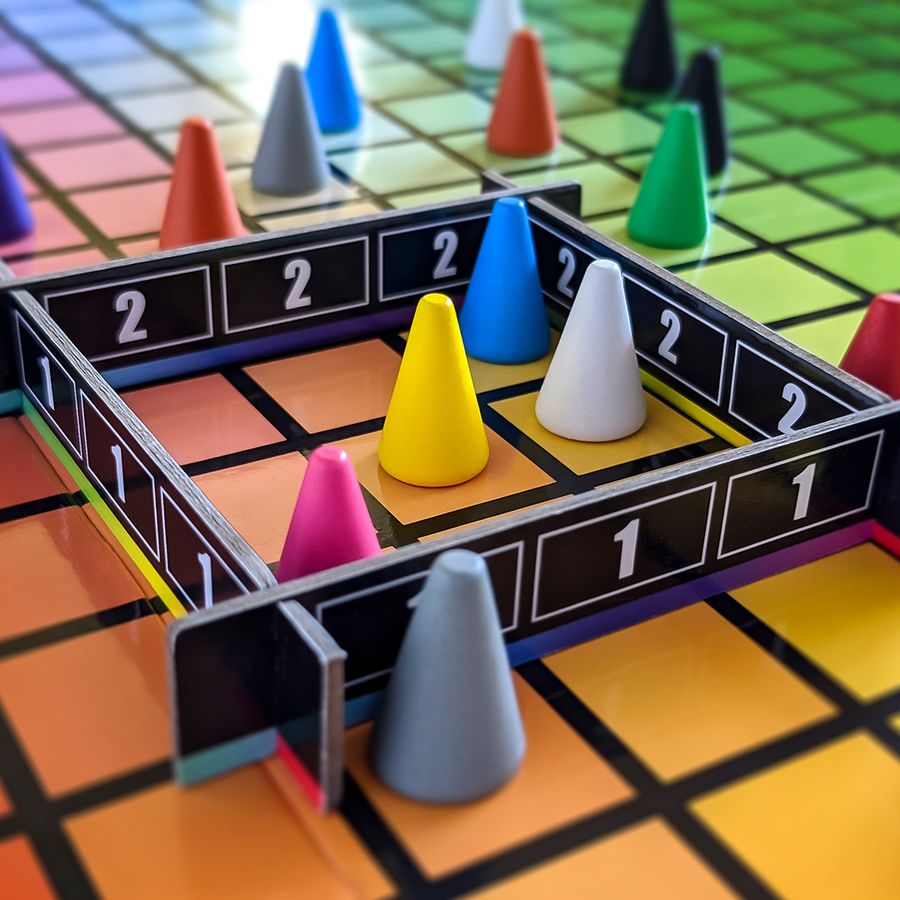
If you’re looking for something fun and different to play from time to time, however, Hues and Cues is a great choice. Someone I played it with described it as ‘Battleships with colours’, and it’s a pretty good description. It’s the sort of game that was born for house rules. The standard game as described in the rulebook feels like it ends pretty quickly, and more than once I’ve played with people who’ve said “Shall we go round once more?”. If you’re worried about couples who know each other too well having an unfair advantage, restrict their choices to a category, like foods only for example.
Final thoughts
Hues and Cues does what it sets out to do, really well. It’s a lightweight, original, fun game for a group. It has universal appeal and pretty much anyone can enjoy it. I’m not sure how well it works for colour-blind people though, having said that. It’s a good game to add to a shelf of party-type games, like Wavelength, Codenames, The Resistance, Telestrations, and Balderdash. Social experiences.
I don’t know whether the feeling of it getting old, quickly, with the same group is just because of how many different games I’ve played, but it’s a consideration all the same. If you’ve got a board game group and you’re looking for something to start or end games nights, Hues and Cues is a great choice. It’s a really good ice-breaker for people who feel self-conscious too, as there’s no acting, bluffing, or social deduction.
Fans of simple games to bring the family together will have a great time with Hues and Cues, and the lack of text means the very young (or very old) don’t have to worry about reading. Is it worth buying? Yes, absolutely, just as long as it’s not your only party game.
Review copy kindly provided by The Op Games. Thoughts and opinions are my own.
Hues and Cues is available from our sponsor – Kienda. Sign-up using this link to get 5% off your first order over £60.
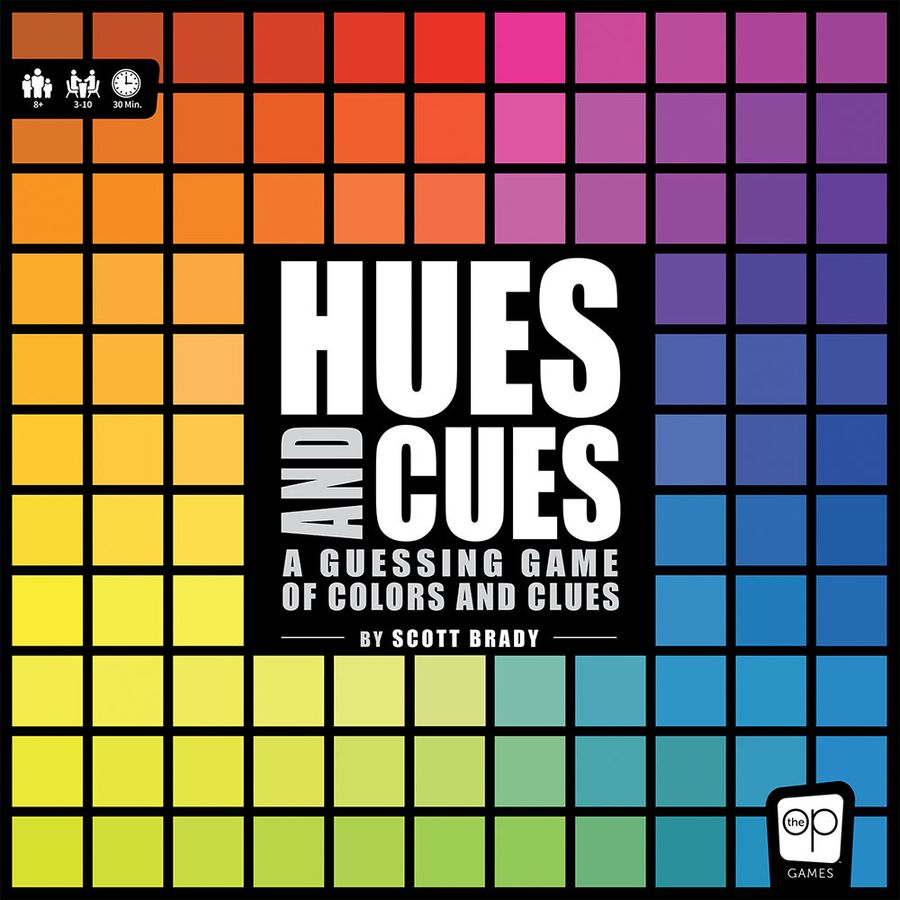
Hues And Cues 2020
Designer: Scott Brady
Publisher: The Op Games
Art: n/a
Players: 3-10
Playing time: 30 mins

I really enjoyed this review of Hues and Cues! It highlighted the game’s unique approach to color and creativity. I can’t wait to try it out with friends and see how our color perception compares! Thanks for the insights!
I loved your review of Hues and Cues! It sounds like such a fun game for family game night. The vibrant colors and creative gameplay really stand out. I can’t wait to try it out with my friends and see who can score the highest! Thanks for sharing your thoughts!
I loved your review of Hues and Cues! It sounds like a fun game for color enthusiasts. Your insights on the gameplay and its appeal to both casual and serious gamers were really helpful. I’m excited to try it out with friends!